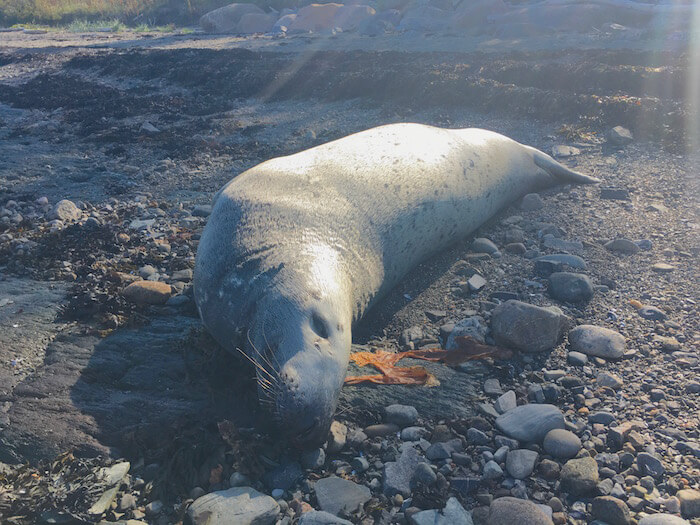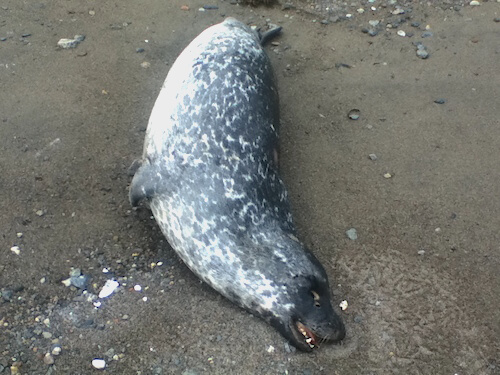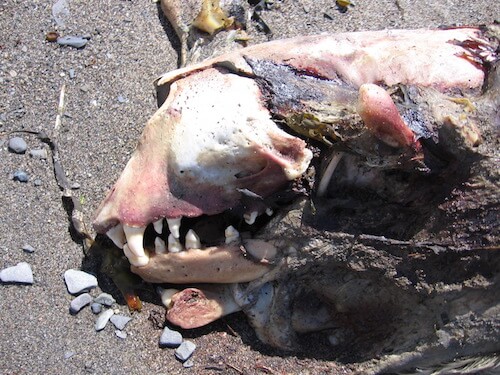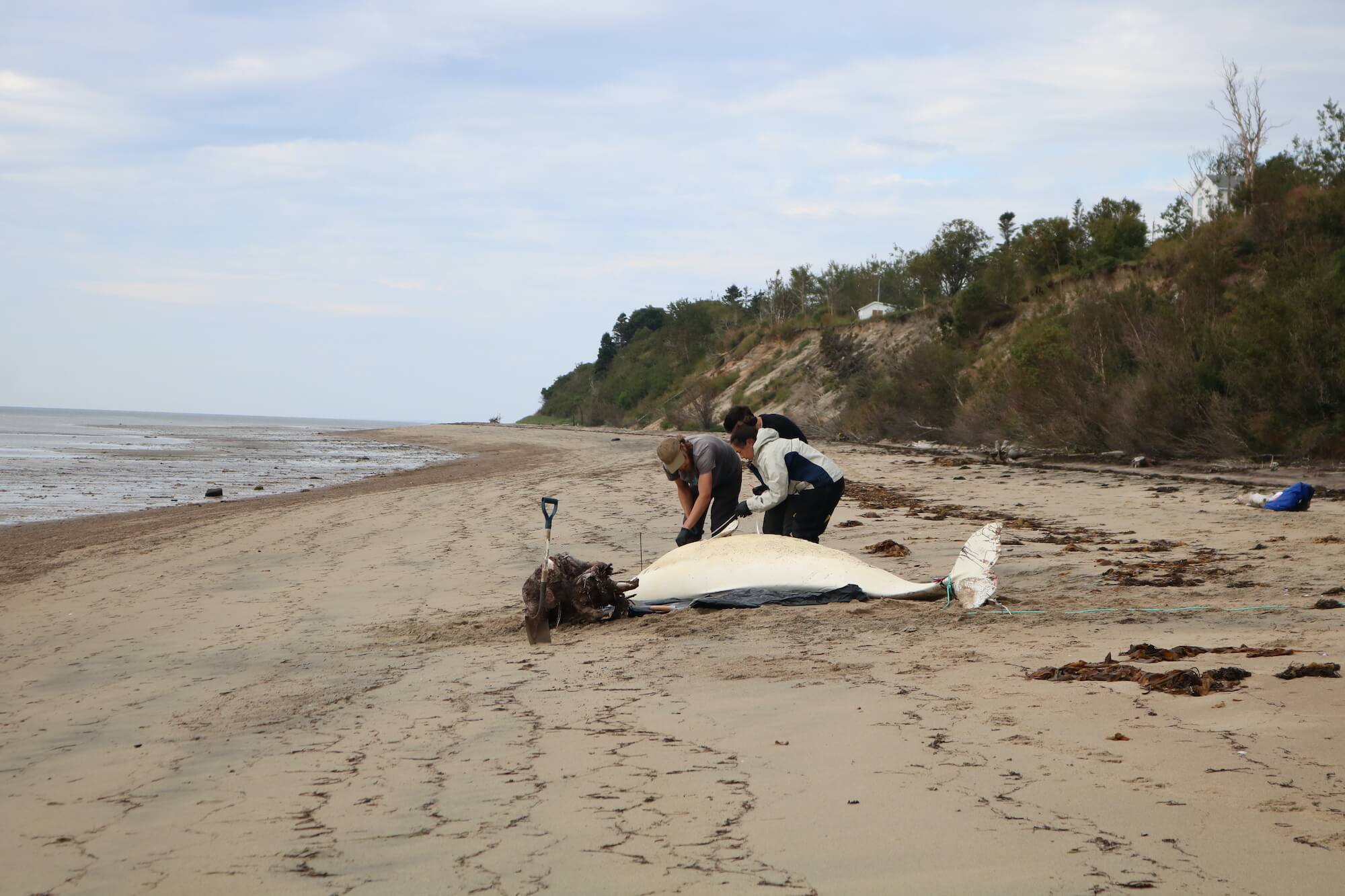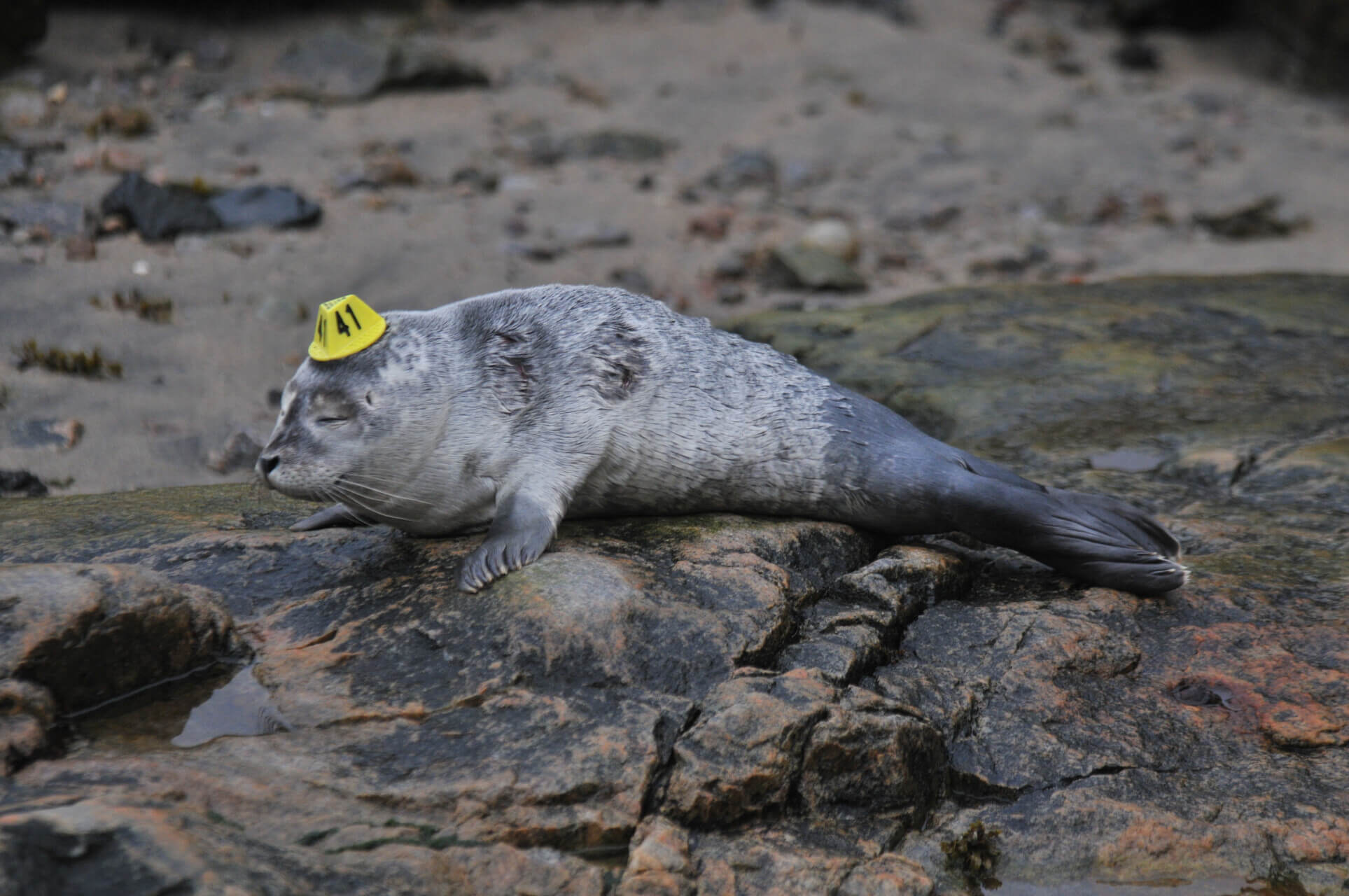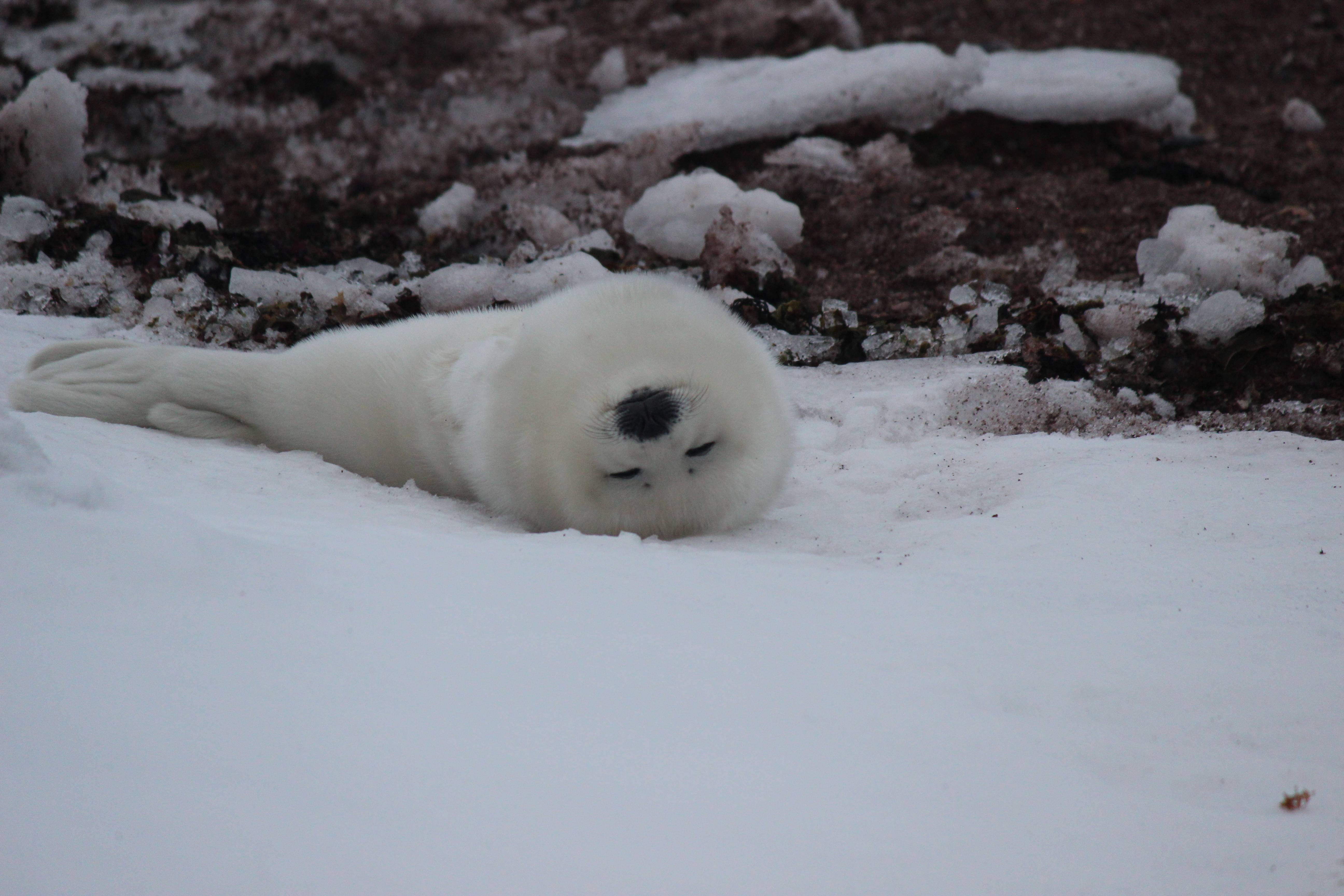One observer reported a seal carcass found in Cacouna to the Marine Mammals Emergencies call centre. What species is it? Here is a brief guide to identify the most common species of pinnipeds found in the St. Lawrence. Note that these criteria are also valid for identifying live seals!
Fur
First and foremost, the coat is the best clue: is it spotted or uniform? Are the spots well defined or rather contour-less? Is the fur cream- or charcoal-coloured?
The coat of the harbour seal is diagnostic: white lines forming well-defined rings on a dark background. The coat pattern in gray seals is more subtle. This species has a black-and-white spotted coat, with a less well-cut pattern of blotches as the white lines are not well defined, explains Jean-François Gosselin of Fisheries and Oceans Canada.
The harp seal, on the other hand, is the easiest to recognize in adulthood: the body is cream-coloured, except for the head which appears to be draped in a black balaclava, while its back shows an impressive horseshoe-shaped mark.
Young harp seals change their coats several times. At birth, they are covered with thick, fluffy white fur. After two weeks, this thick coat gives way to shorter, spotted fur that will look almost the same until the age of four, after which the horseshoe pattern appears.
The hooded seal, which is more rare, is also easy to identify, even without a photo! Juveniles are nicknamed “blue-backs”, due to their bluish-gray coat, like a cape on their back that contrasts sharply with the creamy belly. Another unique criterion: the dark, raccoon-like face mask. In adulthood, hooded seals are often described as having a cow-like coat. Their imposing size is also a good clue.
Head
The shape of seals’ heads are also distinct from one species to another.
- The hooded seal has a large wrinkled and fleshy snout.
- The harbour seal, nicknamed the “dog-headed seal”, has a small, curved snout with heart-shaped nostrils.
- The harp seal also has a small, black head with an elongated neck. Interestingly, but hard to explain: harp seal carcasses are often found decapitated, as if the decomposing organisms first weakened the flesh of the neck and the head eventually broke off.
- The gray seal, known as the “horse-headed seal”, has a robust, squarish snout.
Teeth
If the carcass is in a state of advanced decay, the skull remains an essential part of the body to confirm the species. Attention must be paid to the teeth of the lower mandible.
- For example, the harbour seal has molars with four cusps; in other words, the teeth in the back of the jaw (in the cheek) each have four sharp points.
- The harp seal has tricuspid (three-pointed) teeth.
- The gray seal has but one main cusp on its molars and its canines are massive.
- The teeth of the hooded seal are rather rounded in shape, close together and set deep in the jawbone.
Remember that a picture is worth a thousand words! If you find a seal carcass on shore, you can try to identify it with these criteria, but if you send a photo of the carcass (including the body, head and teeth), the call centre team will be able to identify the species in question. This information is essential for acquiring knowledge about seal carcasses.
Other resources for seal identification:
On the Fisheries and Oceans Canada website
- A comprehensive resource featuring not only species descriptions, but also their distribution, dietary habits, population trends and more.
On the Saguenay-St. Lawrence Marine Park website
- The “Species” page summarizes the characteristics of the different seal species observed in the Estuary.
Based in Rivière-du-Loup, the Marine Mammal Ecowatch Network (ROMM) provides observers with highly relevant identification tools.
- Seals of Atlantic Canada and the Northeastern United States
This 33-page colour guide is the perfect tool for identifying the six species of seals found in Quebec, the Maritimes and along the east coast of the US. The advantage of this resource is that it also shows juvenile stages when the coat differs from that of adulthood. - Marine Mammal Identification Guide and Seals of the St. Lawrence Poster (both in French): the illustrations on these posters illustrate the characteristics of four species of St. Lawrence seals.


